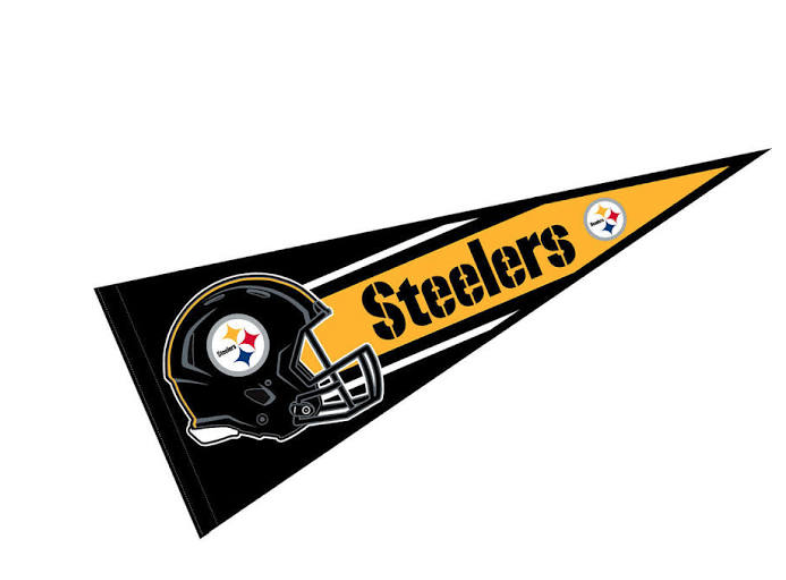New State health mandates will require much of Alaska’s fishing fleet to have a quarantine flag handy this season.
The “Lima flag” is not something most of them have probably ever seen in person. And the requirement is only if they or their crew members are coming from out of state.
If they have a crew member who needs to self-quarantine on board for any reason, that yellow and black flag (or maybe a Pittsburgh Steeler’s sweatshirt, if no quarantine flag is to be found) has to go up the mast to warn people to stay away for 14 days.

The details of how independent fishing vessels will have to protect coastal communities from incoming coronavirus contamination are laid out in Health Mandate 17:
“The time spent in transit from the final out-of-state port to Alaska on a vessel, demonstrated through a ship’s log or equivalent record, will count towards the in-state quarantine requirement state, 14-day mandatory self-quarantine period if all protective measures are followed.
“The vessel must report that it is undergoing self-quarantine, or has a self- quarantined crewmember on board, if it has any contact with another vessel, a processor, or a harbormaster.
“Vessels are required to fly a “Lima” flag or similar yellow and black pennant if they have any crew on board still under self- quarantine.
“Once the initial self-quarantine period after arriving in the State has been observed, there is no requirement to repeat the self-quarantine period when moving between Alaskan communities,” the health mandate states.
The complete set of health mandates for fishing vessels is at this link.
The mandate, which comes with other specific provisions besides the new requirement for a quarantine flag, will be reviewed on May 20, according to the State Department of Health and Social Services. The rule applies to “independent commercial fishing vessels,” which are defined as catcher and tender vessels that have not agreed to operate under a fleet-“wide plan submitted by a company, association, or entity that represents a fleet of vessels.” It does not apply to skiffs operating from shore, which have their own guidance documents. The mandate alleviates the requirement for independent commercial fishing vessels to submit a cumbersome plan to protect communities they visit.

Better yet, fly the “skull and crossbones,” a black and white flag. During pirate days in the Caribbean, smart merchant vessels flew this flag to escape the wrath of doom by murderous pirates. It meant, black death was onboard. It scared them off.
Or, pirates flew the skull and crossbones because they were ex-knights templars and wanted to get back at the powers that took them out.
Mandates, shmandates…….meaningless decrees from a marginalized RINO Governor.
Take Bristol Bay, for instance (and Prince William Sound, Kodiak, Chignik, Copper River, Cook Inlet, all fishing ports West and many southeastern ports and districts). The salmon gill netters/seiners, herring seiners, etc., except for those needing major shipyard repair, are lifted out of the water and stored ashore during the off season, in Alaska. The crew leaves, to come back next season and avoid the trials of wintering in Alaska. They take their Alaska provided riches with them. The only spending occurring in Alaska for these out of state crews and vessels is what little they absolutely must spend. Every other cent goes south with them, Alaskan tax free. Only those boats needing significant repair/refit are taken south to their out of state home ports. Those travel lashed down on barges or tenders and return the next season via similar method. The boats don’t need quarantined if they have just spent the winter ashore near the fishing grounds in Alaska. The out of state crew does, upon returning to ‘harvest’ Alaska’s bounty. The boats crews all need to be quarantined according to the master plan. Just like Alaskans who had the misfortune to be out of state when the quarantine requirements were implemented. The “final out of state port” for most of the fishing boats was when they were built out of state. Most spend their entire useful fishing life in Alaska, ashore during the off season. Not their crews. Lots of room for manipulating the rules on Wuhan v. Most of the long-line vessels (cod, halibut, black cod, etc.) will spend at least 14 days fishing on the way to Alaska. Quarantine becomes a moot point, if the vessel logs are kept accurate.
Little trivia. 90% plus “Alaskan” fishing boats and permits are owned by out of state non-Alaskans.
The next thing you know, the State of Alaska will require the crew masks, so fish don’t get COVID.
Sounds stupid…but wouldn’t put it past Gov. Dun
Seriously? Better to put masks on the fish.
Ben, 90% permit holders are non resident? Really? Statewide? Or just Bristol Bay? Facts please.
that is leftist fake news. The CFEC lists 23406 total permits. 18205 resident and 5201 non resident. 15864 people would have to be lying for him to be correct. I checked fisherman I know who are non resident. None of them were claiming residency on their permit. Bristol Bay is about 50 50.
Leo,
Maybe you should look a little closer. Probably close to half the permits in Bristol Bay are “beach sites”. Those are owned by a larger percentage of Alaskans. A great deal of those “commercial” permits you speak of are for various rivers throughout Alaska, owned and operated by natives only. Situk River Lagoon near Yakutat is one good example. A few hundred permits there, alone. Very few with commercial boats. Their gill nets qualify as commercial and are worked from the beach with a skiff. Same in the Inlet. Some ‘permit’ holders I know are Alaskan but the fishing is not done by them. For black cod, for instance, the permit holder must be aboard the fishing vessel. The permit holders may have been Alaskans at one time or bought the permit poundage quotas from Alaskans, but most now only come back to Alaska to attend the permits leased to out of state boat owners without permits. I believe they’re called ‘snow-birds’ by many. Not resident enough to file for PFD. It is not “leftist” fake news. Take a trip to Bristol Bay during fishing season. See how many ‘residents’ you meet or know about with a boat and permit. I’m not talking about hand troll, subsistence permits or permits in the Yukon, Kuskokwim or other rivers. The real deal, on the ocean with a boat and permit. It’s easy to spin BS into ‘fake news’. Facts, a little different.
OTA,
I believe the percentage of non-resident boat and permit owners in Bristol Bay may be higher than the rest of the state. Not by much. It’s not only the smaller fishing vessels. All but a very small percentage of crab boats, draggers, trawlers, virtually all processors, most tenders and larger vessels are not Alaskan owned or operated. No financial benefits for Alaska or most residents except maybe a crew slot here and there, a little groceries or fuel or flights home and back. Many Alaskan fisheries, including crab and longline (halibut and black cod/sablefish), are relegated to a quota system divided among individual permit holders, according to historical catch records by those permit holders. Salmon and herring permits are “go for it”, with no individual limits, until the general area quotas are filled or the seasons end. Very few of those half million to million dollar or more, permits in any of Alaska’s fisheries, are still owned by the original permit holders/Alaskans. Most all indigenous people were issued fishery permits by virtue of historical benefits afforded to native Alaskan people and the fact that most fished for subsistence as well as income. The “swan song” of big bucks persuaded most of them to forego their ‘inherited’ rights as fisherfolk for the laid back life of the moderate to well-off ‘gus-uk’ (white man). Gov’t takes care of them first and foremost.
https://www.cfec.state.ak.us/pstatus/14052019.htm in case you would actually like to know the numbers.
Wait a second, does this mean infected Alaskan fishermen and fish processors can sell infected fish to Alaskan germophobes?
.
Wonder what would happen if boat owners and crews just said, “No!”… maybe offered to go on strike.
.
And just saying, “No!” started a statewide movement…
.
Maybe it’s time to find out…